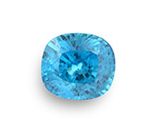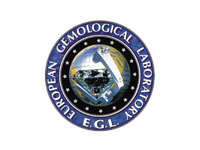Learn About Gemstones
Agate
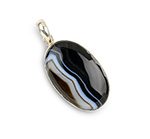 One of the most desired members of the chalcedony family of stones agate has colors arranged in stripes, blended in clouds, or spotted formation. There are countless varieties of agate usually named after their physical characteristics or location of origin. Agate is found in Uruguay, Brazil, the United States, Mexico, Madagascar, Italy, Egypt, India, China, Scotland, and Germany.
One of the most desired members of the chalcedony family of stones agate has colors arranged in stripes, blended in clouds, or spotted formation. There are countless varieties of agate usually named after their physical characteristics or location of origin. Agate is found in Uruguay, Brazil, the United States, Mexico, Madagascar, Italy, Egypt, India, China, Scotland, and Germany.
Alexandrite
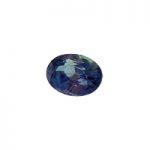 This unique and very rare gemstone is named after Russian Tsar Alexander II, because it was discovered in 1834, on his 16th birthday. It was found in the Ural Mountains while mining for emeralds. It is the most valuable gem in the chrysoberyl family because it often changes color from green or bluish-green in daylight to reddish or raspberry in incandescent light. This gemstone has also been found in Myanmar, India, Zimbabwe, Tanzania, and in the late 1980s in Brazil.
This unique and very rare gemstone is named after Russian Tsar Alexander II, because it was discovered in 1834, on his 16th birthday. It was found in the Ural Mountains while mining for emeralds. It is the most valuable gem in the chrysoberyl family because it often changes color from green or bluish-green in daylight to reddish or raspberry in incandescent light. This gemstone has also been found in Myanmar, India, Zimbabwe, Tanzania, and in the late 1980s in Brazil.
Amber
 This organic gem is actually the fossilized hardened resin of the pine tree. The most valuable pieces contain inclusions of insects, plants, or pyrites. Amber is best known as yellow, orange, or brown in color; but the stone ranges from a milky white through a pale lemon yellow to a brown or almost black. There are also examples of red or green, and even blue amber that is rare. The majority of amber that is found today is approximately 30 to 90 million years old. The largest amber deposits are found in the Dominican Republic and the seabed of the Baltic.
This organic gem is actually the fossilized hardened resin of the pine tree. The most valuable pieces contain inclusions of insects, plants, or pyrites. Amber is best known as yellow, orange, or brown in color; but the stone ranges from a milky white through a pale lemon yellow to a brown or almost black. There are also examples of red or green, and even blue amber that is rare. The majority of amber that is found today is approximately 30 to 90 million years old. The largest amber deposits are found in the Dominican Republic and the seabed of the Baltic.
Amethyst
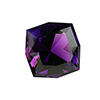 The name comes from the ancient Greek word, amethustos, meaning not intoxicated, and a reference to the belief that the stone protected its wearer from drunkenness. Brazil and Zambia are the primary source of amethysts mined today and is also found in Uruguay, Bolivia, Canada, India, Madagascar, Mexico, Namibi, Russia, Sri Lanka and the Arizona in the United States. The most important amethyst deposits are in Brazil, namely the “Palmeira” amethysts of Rio Grande do Sul and the “Maraba” amethysts of Para.
The name comes from the ancient Greek word, amethustos, meaning not intoxicated, and a reference to the belief that the stone protected its wearer from drunkenness. Brazil and Zambia are the primary source of amethysts mined today and is also found in Uruguay, Bolivia, Canada, India, Madagascar, Mexico, Namibi, Russia, Sri Lanka and the Arizona in the United States. The most important amethyst deposits are in Brazil, namely the “Palmeira” amethysts of Rio Grande do Sul and the “Maraba” amethysts of Para.
Ametrine
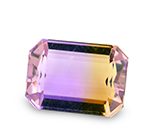 A very unique member of the quartz family ametrine is a mixture of amethyst and citrine with the stone displaying both zones of purple and yellow or orange. The color zones visible within the stone are due to differing oxidation states of iron within the crystal while it was forming. Bolivia is the major world producer of ametrine.
A very unique member of the quartz family ametrine is a mixture of amethyst and citrine with the stone displaying both zones of purple and yellow or orange. The color zones visible within the stone are due to differing oxidation states of iron within the crystal while it was forming. Bolivia is the major world producer of ametrine.
Andalusite
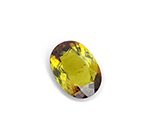
This gemstone was first found in Andalusia, Spain in 1789. The most common color is a bronzed red coupled with golden green. Often called a poor man’s alexandrite, these stones are found in sizes less than 1 ct. and are mined in Sri Lanka, Brazil, Australia, and Spain.
Aquamarine
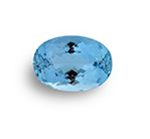
A member of the beryl family of stones, aquamarine was often thought to resemble the clear, blue water of the Mediterranean by the Greeks and Romans. Like the sea water it is named for its color can range from blue to green blue. These stones were symbols of youth and everlasting happiness to the Romans. Aquamarine is mined in Brazil, China, India, Russia and the United States.
Bloodstone
A member of the quartz/chalcedony family of stones it is green spotted with red dots of iron oxide. It is also known as heliotrope because the ancient Greeks noticed how the polished stones reflected the sun. India is the main source of this stone but it is also found in Australia, China, South America, and the United States.
Carnelian
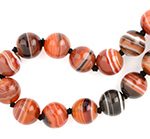
A member of the quartz/chalcedony family it derived its name from the cornel cherry because of its red color. Carnelian is one of the oldest known gemstones; it was one of the 12 gemstones mentioned in the Bible as appearing on the breastplate of Aaron.
Cat’s Eye
 This phenomenon that is gemologically called chatoyancy, derives its name from the French for “eye of the cat” because the effect resembles just that, an eye of a cat. The most well known cat’s eye is Chrysoberyl. Cat’s eyes appear in other stones but need to be referred to by the name of the stone it appears.
This phenomenon that is gemologically called chatoyancy, derives its name from the French for “eye of the cat” because the effect resembles just that, an eye of a cat. The most well known cat’s eye is Chrysoberyl. Cat’s eyes appear in other stones but need to be referred to by the name of the stone it appears.
Chalcedony

This quartz family of gemstones has a waxy luster and can be semitransparent or translucent. It can occur in every color in the rainbow. Agate, carnelian, chrysoprase, heliotrope and onyx are all members of the chalcedony family. As early as the Bronze Age chalcedony was highly prized and used in the Mediterranean region as adornments.
Chrome Diopside
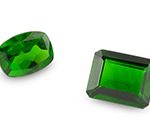
This green gemstone color commonly ranges from light to dark green. Its name is derived from the melding of two Greek words di and opsis meaning double vision. The rich green color is caused by chromium which also gives emerald its green color. Primarily mined in Russia it is also found in India, South Africa, the United States, Finland, and Myanmar.
Chrysoprase
This apple green stone derives its color from trace amounts of nickel and is the rarest of the chalcedony family of stones. Legend says that it enhances grace and equilibrium and in some areas of the world it was thought to increase fertility. It is found in Australia, Brazil, Russia and the United States.
Citrine
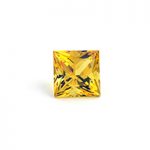
A member of the quartz family this stone color ranges from pale yellow to brown. The name comes from the French word for lemon, citron. Citrine was carried as protection against snake venom and evil thoughts by ancient people. It is also believed to make its wearer lighthearted. Deposits of this stone are found in Brazil, Russia, France, and Madagascar.
Coral

A gemological cousin to pearl, it is also known as red coral. Red corals are found growing at the bottom of a sea, in dark environs. In Greek mythology when Medusa was slain her head rested on a riverbank and as her blood drained into the sea it changed the seaweed it touched into red coral. First harvested in the Mediterranean Sea it is also found at Atlantic sites near the Strait of Gibraltar and at the Cape Verde Islands. Similar species are found in the western Pacific near Japan and Taiwan.
Demantoid Garnet
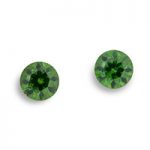
A member of the garnet group this green gemstone gets it color from iron. Its name means diamond in Dutch and has a higher dispersion (brilliance) than diamond. While garnets were known since ancient times the demantoid variety was not discovered until the mid 1800s in Russia’s Ural Mountains. This gem is considered one of the most valuable garnets because of its rarity. Aside from Russia this stone is mined in Namibia, Italy, and Iran.
Emerald
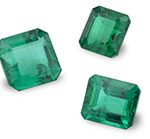
The favorite stone of Egyptian Queen Cleopatra, emerald is a member of the beryl family of gemstones. The mineral chromium is what gives the emerald its color, the higher the chromium the more intense the color. Emeralds were mined by the ancient Egyptians and their name comes from the Greek word smaragdos meaning green stone. The finest emeralds are found in Columbia but emeralds are also found in Zambia, Zimbabwe, Brazil, Russia, and Afghanistan.
Garnet
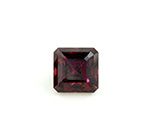
This durable stone occurs in many colors in many countries around the world. Pyrope, red, purple, spessartite, orange; tsavorite, green; and almandite, brown are just a few of the members of the family. The name is derived from the Latin word granum meaning grain. These stones were considered to symbolize faith, constancy, and truth by ancient people as well as having strong curative powers.
Gemstone Diamond
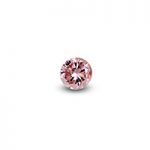
The hardest material known to man, diamond is the only gemstone primarily comprised of one element, carbon. One of the oldest known gems, diamonds were mined in India as far back as 400 B.C. The largest diamond ever found was the Cullinan, a 3,106 ct. behemoth, found in 1905. It was cut into 105 stones, two of which reside in the British Crown Jewels.
Hessonite Garnet
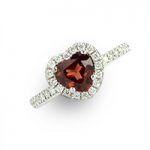
This member of the garnet family is brownish-red to yellowish-orange and is often called the cinnamon stone. Hessonite in Greek means inferior and refers to the stone being less hard than other garnets. It mainly comes from Sri Lanka and India but has also been found in Brazil and the United States.
Iolite
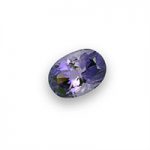
The name Iolite comes from the Greek ios which means violet. The most treasured color is a vivid violet blue. Iolite is a pleochoric stone which means that different color shades can be seen when viewed at different angles. The largest iolite ever found was a 24,000 ct. stone in Wyoming. Besides the United States, this gemstone is also found in Brazil, Sri Lanka, Canada, and Madagascar.
Jade
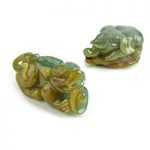
This stone ranges from light to dark green, yellow, brown, white, black and grey. The most valued color is the imperial green color that can rival the color of emeralds. Examples of jade items used in the Neolithic period have been found in China. This stone is mined in China, Myanmar, Russia, and South America. There are two types of jade: jadeite and nephrite.
Kunzite
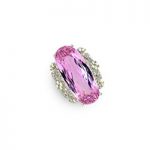
This pink to violet gemstone is also known as evening stone because the color fades in prolonged exposure to sunlight. This relative newcomer to gemstone family was first identified in Connecticut by Tiffany & Co. gemologist and namesake George Kunz. The first significant deposits were discovered in California in 1902. Today, most kunzite is mined in Brazil, Afghanistan, and Madagascar.
Kyanite
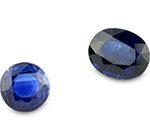
This gemstone derives its name from the Greek word kuanos that means deep blue. Kyanite can appear as cabochon or faceted stone and range in color from cobalt blue to light blue/green and colorless. It is considered an exotic gemstone because it is not often used in jewelry.
Labradorite
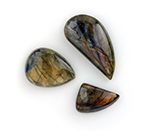
This stone is named after the Labrador Peninsula in Canada where it was first discovered in 1770. This stone can be gray, brown, green, blue, or yellow with a milky iridescence and metallic luster, when polished, is why it sought as a gemstone. Aside from Canada this stone is found in Norway, Finland, and Madagascar.
Lapis Lazuli
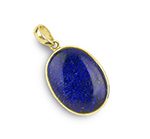
The intense blue of this naturally occurring stone has been prized for its color by ancient peoples. It takes its name from Latin and Arabic words that translate to heaven-blue stone. The name is sometimes shortened to Lapis and while the stone is hard it can be carved. This stone has been mined in Afghanistan for more than 6,000 years and deposits are also found in Russia, Argentina, Myanmar, Pakistan, Canada, India, and in the United States.
Malachite
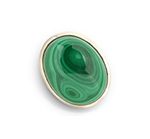
This opaque, green-banded stone derives its intense color from copper. It is named after the Greek word for “mallow” because it resembles the leaves of the mallow plant. According to archeological evidence it was mined more than three centuries ago in Israel. Large quantities of the stone is found in Russia but it is also found in lesser quantities around the world, including Africa, Mexico, Australia, France, Israel and the southwestern United States.
Moonstone
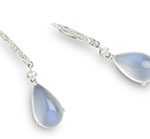
This opaque stone gets its name from the Romans who believed it was born from solidified rays of the moon. This stone when formed has thin, flat layers and the seams between layers have a pearly opalescent luster. This stone is found in Australia, Austria, Mexico, Madagascar, Myanmar, Norway, India, Sri Lanka, and the United States.
Morganite
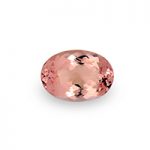
This beautiful pink stone is a member of the beryl family along with emerald and aquamarine. This gemstone was introduced to the world in 1911 and was named after famous banker and gem collector J. P. Morgan. It is found mainly in Brazil but also in Afghanistan, Madagascar, and California in the United States.
Onyx
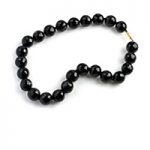
A member of the quartz/chalcedony family, onyx is actually dyed agate. Its name comes from the Greek word, onux, meaning fingernail. Onyx actually dates back to ancient Egypt where it was used to make bowls and other pottery-like items. It is mined worldwide including Brazil, India, Madagascar, and the United States.
Opal
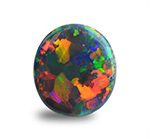
This gemstone is primarily mined in Australia and stones come in a full spectrum of color. The most common are the milky white and green stones while the red against black are the most rare. Opals are valued by the fire or play of color when looked at from different angles. Deposits of these stones are also found in the United States, Czech Republic, Turkey, Indonesia, Brazil, Ethiopia, and Guatemala.
Pearl
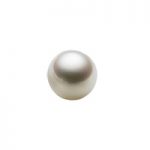
This naturally forming gem is produced within the soft tissue of a living shelled mollusk, such as an oyster. Cultured pearls can be divided into two categories: beaded salt-water and non-beaded freshwater pearls. The iridescence of pearls is what makes them highly prized and range in color from white to cream-golden, green, blue, black, and rainbow. Cultured pearl farms are found in China, Japan, Australia, Indonesia, and the Philippines.
Peridot
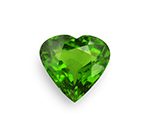
This gemstone is an ancient one, mentioned in the Bible and one of the few gemstones that exist in only one color, green. The Romans called this gem “evening emerald” since the green color didn’t darken at night and was still visible by lamplight. A member of the olivine family of stones, its color is derived from traces of iron introduced during its formation. Main deposits are found in Pakistan, China, Vietnam, and Arizona in the United States.
Rhodolite Garnet
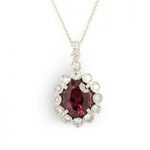
Named for the Greek word meaning rose this beautiful gem is a mixture of pyrope and almandite garnets. First discovered in North Carolina in 1882 the color of this gemstone ranges from purplish red to reddish purple. In 1996 a 19th century rhodolite brooch once owned by Jacqueline Kennedy Onassis sold for $145,000 at auction.
Rose Quartz
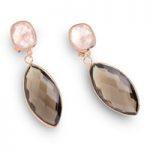
A sister to amethyst, rose quartz exhibits a transparent pale pink to rose-red hue. Sometimes called the gem of the heart its history can be traced back thousands of years. The main source is Brazil but it is also found in Europe, Asia, Africa, South America, Canada and the United States.
Ruby
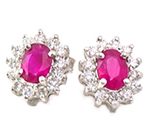
Known to the ancients as “the King of Gems” ruby dates back centuries and is referenced in the Bible. The name of this gemstone comes from the Latin word ruber meaning red. Second only to diamonds in hardness it is the red cousin of sapphires. The highest quality rubies are very rare and can be worth more than diamonds. These gemstones are mined in Myanmar, Thailand, Cambodia, India, Afghanistan, Pakistan, and Sri Lanka. Ruby is used to commemorate 15th and 40th wedding anniversaries.
Sapphire
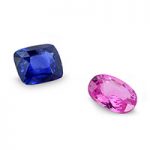
The most well known of the sapphire family is the blue stone that is only second in hardness to diamonds and known as the gem of heaven because of its rich blue color. The use of sapphires as adornment dates back, as early as, the 7th century B.C. One of the most famous sapphires is the 104 ct. Stewart Sapphire mounted in the British Imperial State Crown. Sapphires are most prevalent in Australia, Thailand, Sri Lanka, China, Madagascar, Africa, and Montana in the United States.
Smoky Quartz
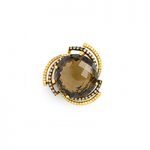
There are very few brown gemstones and smoky quartz is certainly the most well known. This national gem of Scotland was used by the Chinese to make sunglasses in the 12th century. Brazil is the world’s largest supplier but it can be found many places including the United State’s Pikes Peak region of Colorado.
Spessartite Garnet
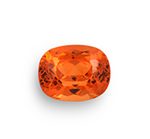
This member of the garnet family of stones is named after the Spessart region in Bavaria, Germany where it was first found in the 1800s. The best specimens have a bright orange “fanta” color and are called Mandarin garnets. Mandarins are found in Namibia and Nigeria. Other locales for spessartite include: Brazil, Myanmar, Mozambique, and the United States.
Sphene
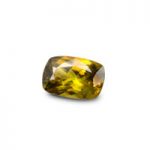
First discovered in the late 1700”s sphene is one of only three gemstones with a higher dispersion and more brilliant than a diamond. Sphene is a very rare brilliant gem that can occur in several colors including yellowish green, green, orange or brown. The name “sphene” comes from the Greek word for “wedge” referring to its typical crystal shape. Its mineralogical name is Titanite because of its titanium content. Intense green sphene is also known as “chrome sphene”, due to the coloring agent chromium. Sphene deposits are found in Brazil, Myanmar, India, Kenya, Madagascar, Mexico, Austria, Sri Lanka Ceylon and the U.S.
Spinel
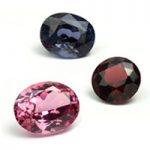
This “step-child” of the gem world, has never received the recognition it deserves. Historically, many famous spinels were originally thought to be other, more “popular” gemstones. Today however, spinels can be some of the most gorgeous gems you will find. These gemstones can be red, blue, mauve, dark green, brown, and black and every color in between. Some spinels have a very “electric or neon” tone. The name is derived from the Latin word spina, meaning thorn. These stones are prevalent in Sri Lanka, Afghanistan, Africa, Myanmar, and Vietnam.
Sunstone
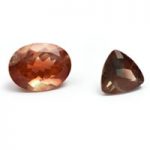
Sunstone is a gem-quality member of the feldspar family and is famed for its aventurescence, often referred to as ‘schiller’. Sunstone is typically orange to reddish in color and its spangled appearance is reminiscent of the sun, hence its name ‘sunstone’. The spangles can be red in color or more rarely green or blue which is caused by light reflections from tiny hematite or goethite platelets. Some of the more significant, notable deposits come from India, Canada, Madagascar, Norway, Russia and the USA (Oregon, Pennsylvania, North Carolina and Utah). Oregon is famous for producing sunstone included with traces of copper, and named it the state’s official gemstone.
Tanzanite
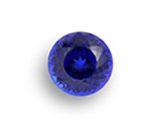
This blue/purple gemstone was first discovered in 1967 in northern Tanzania at the base of Mt. Kilimanjaro. Officially called blue zoisite it was marketed as tanzanite by Tiffany & Co. who wanted to capitalize on the rarity of this gem that is only found in Tanzania. Tanzanite is the only gem discovered in the last 100 years that has been added to the birthstone list, as a December birthstone.
Topaz
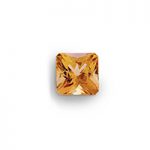
Is a stone of many colors but pure topaz is colorless and transparent. It is the impurities that give life to the stone. Topaz comes in brown, orange, gray, yellow, blue, green, and pink. While we think of topaz as being blue most of the time, naturally occurring blue topaz is quite rare. This stone is mined in Russia, Afghanistan, Sri Lanka, Australia, Nigeria and the United States.
Tourmaline
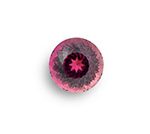
This stone consists of more color variants than any other gemstone in the world. Usually rich in iron these stones run from black to bluish-black to deep brown. Depending on the trace elements colors can be blue, green, red, yellow, and pink. Crystals can be bi-colored or multicolored and some stones change color when viewed from different angles. Tourmaline from Sri Lanka was first introduced to Europe by the Dutch East India Company. Today tourmaline is mined in Brazil, Africa, Tanzania, Kenya, Afghanistan, Pakistan and the United States.
Tsavorite Garnet
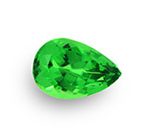
A member of the garnet family this stone is relatively new on the gemological scene. A deposit was found in 1967 by a British gem prospector in northeast Tanzania. This vivid green stone is believed to be 200 times more rare than emerald. It was also found in nearby Kenya in 1971 by the same prospector who was granted a permit to mine it. The public was introduced to the stone by Tiffany and Co in 1974. The only other place it is found on the planet is Madagascar.
Turquoise

This opaque, blue/green mineral derives its color from a mixture of copper and aluminum. It has been prized as an ornamental stone for thousands of years. It is prominently displayed on the burial mask of King Tut. The substance has been known by many names but turquoise comes from an Old French word for Turkish, because the mineral was first brought to Europe from the Turkish Empire or modern day Iran. Turquoise is a byproduct of copper mining and the southwest United States is a significant source.


